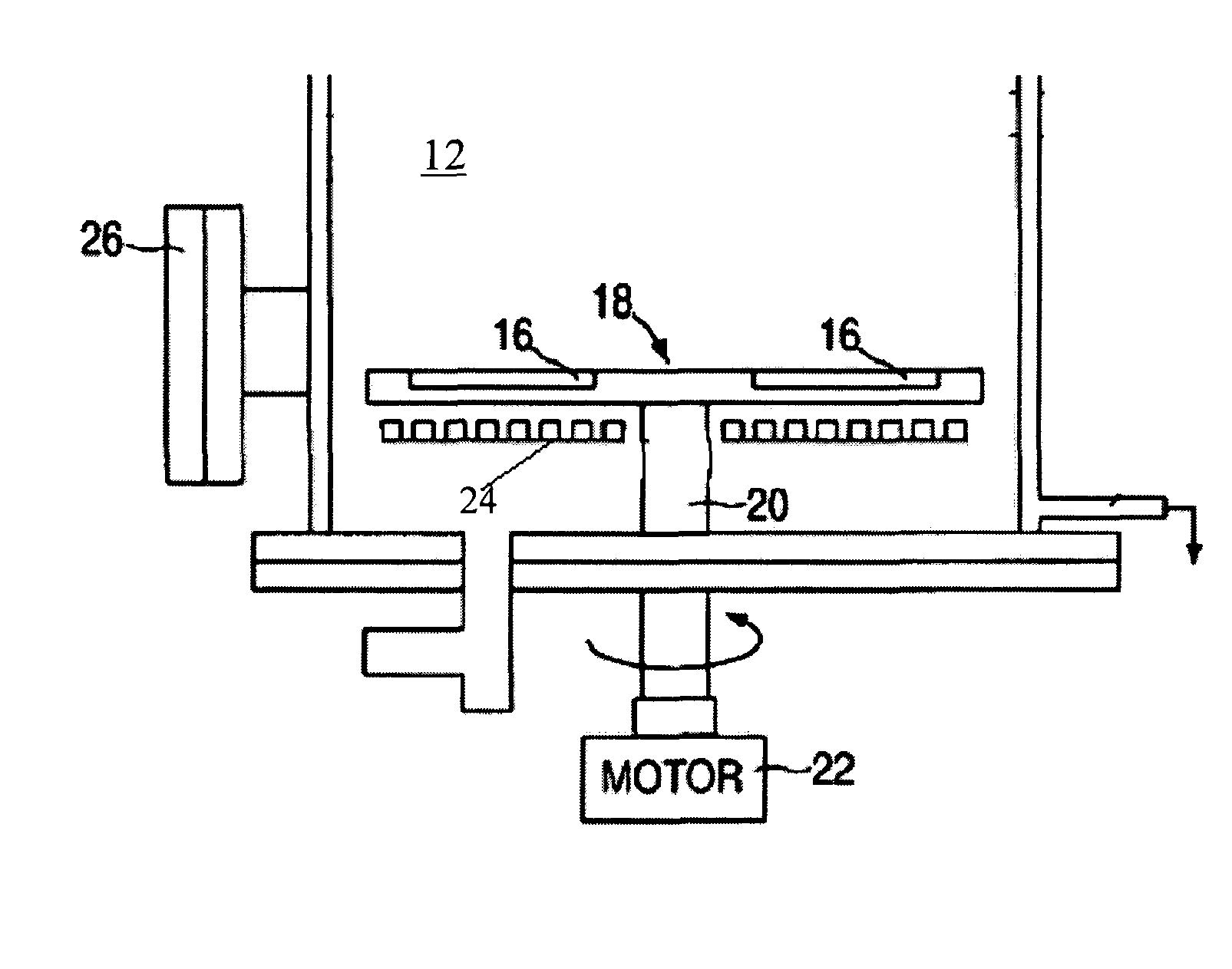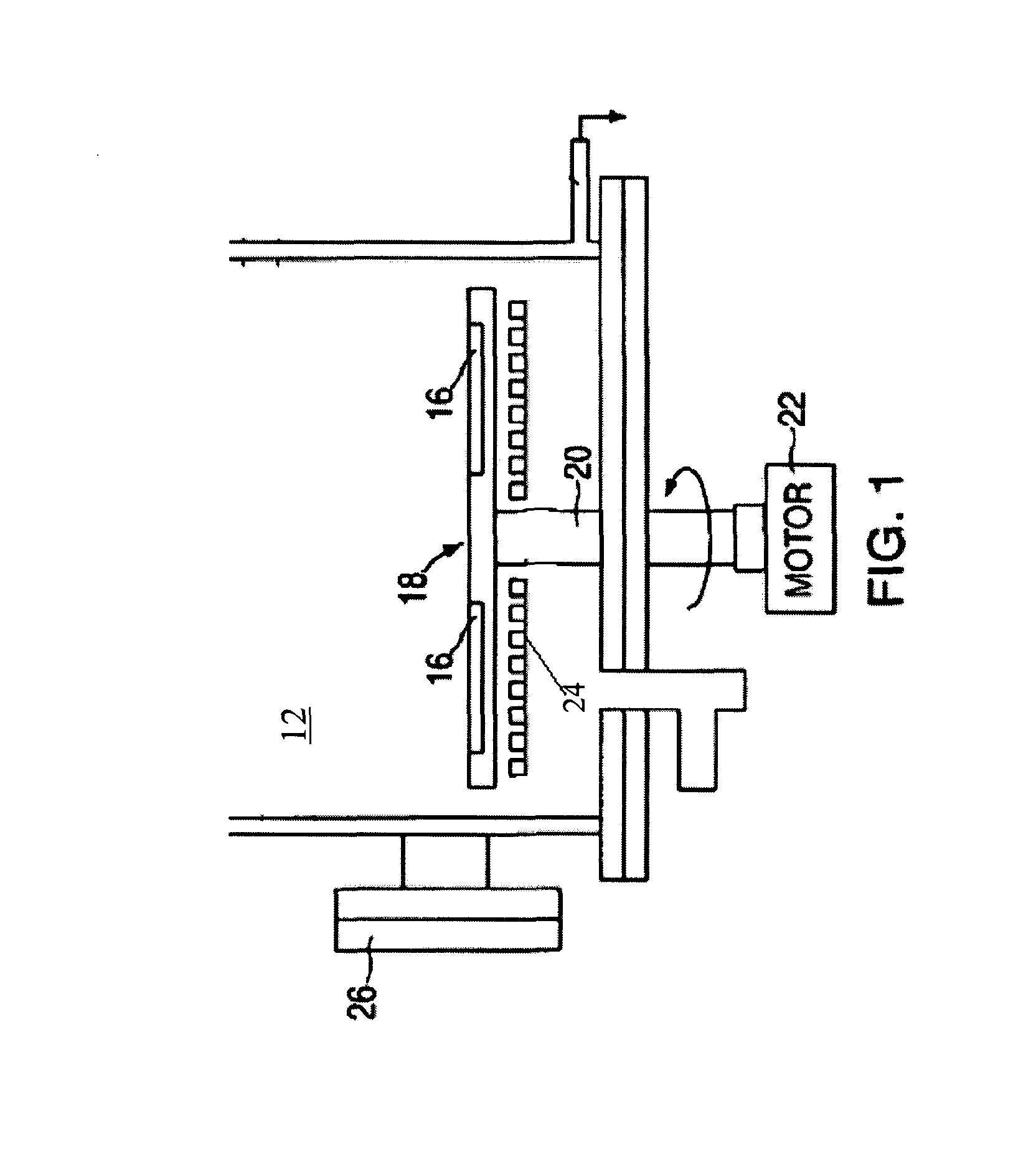RF heater arrangement for substrate heating apparatus
a heater arrangement and substrate technology, applied in the direction of coatings, metallic material coating processes, chemical vapor deposition coatings, etc., can solve the problems of inability to provide stably these temperature levels for prolonged periods of time, failure of materials to be properly deposited on the substrate, and inability to maintain the temperature level for a long time. , to achieve the effect of reducing levitation, reducing the number of rf heaters, and reducing the number of rf heater
- Summary
- Abstract
- Description
- Claims
- Application Information
AI Technical Summary
Benefits of technology
Problems solved by technology
Method used
Image
Examples
Embodiment Construction
[0014]FIG. 1 illustrates a Chemical Vapor Deposition (CVD) System 10 which, in general overview: includes a reactor chamber 12, sealed to the atmosphere, in which is mounted a distribution housing (a showerhead, which would be located at the top in this example—but is not shown herein) for the film growth reactant gases. The distribution housing directs the reactant gases over one or more substrate wafers 16, mounted, in this example, on a rotatable susceptor 18 which is rotated through a shaft 20 by a motor 22 mounted externally from reactor chamber 12, and which are to heated by a heater unit 24 which may be either a resistive heating element or an induction RF heating coil. In an RF heating system the magnetic field generated by the RF coil induces eddy currents in susceptor 18 which cause it to become heated along with the wafers mounted thereon. The reactant and carrier gases generated by external sources (not shown) are distributed though distribution housing 14 and flow over ...
PUM
| Property | Measurement | Unit |
|---|---|---|
| RF energy | aaaaa | aaaaa |
| electrically insulating | aaaaa | aaaaa |
| thermal conductivity | aaaaa | aaaaa |
Abstract
Description
Claims
Application Information
 Login to View More
Login to View More - R&D
- Intellectual Property
- Life Sciences
- Materials
- Tech Scout
- Unparalleled Data Quality
- Higher Quality Content
- 60% Fewer Hallucinations
Browse by: Latest US Patents, China's latest patents, Technical Efficacy Thesaurus, Application Domain, Technology Topic, Popular Technical Reports.
© 2025 PatSnap. All rights reserved.Legal|Privacy policy|Modern Slavery Act Transparency Statement|Sitemap|About US| Contact US: help@patsnap.com



